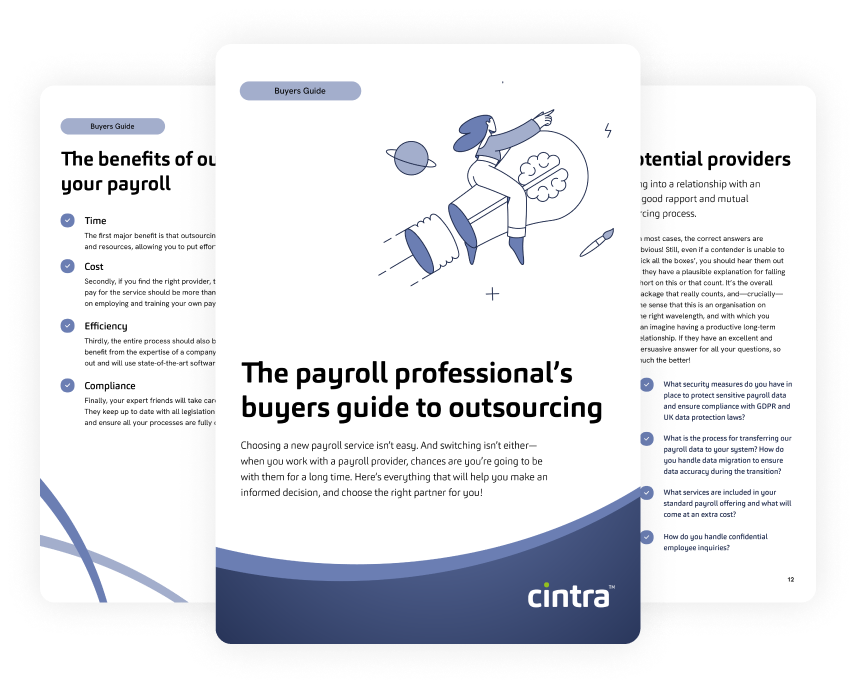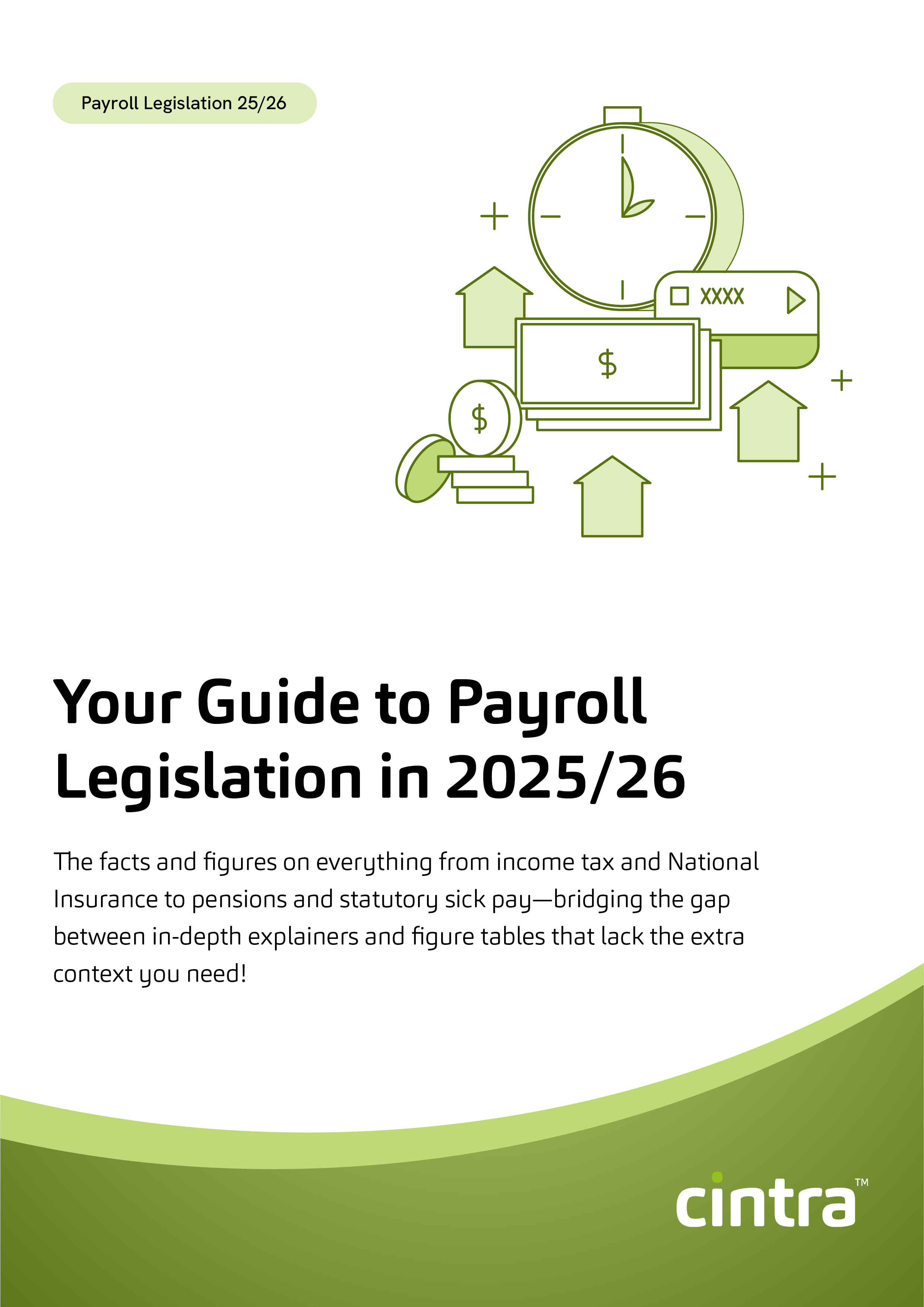The payroll processing process is pretty much the same whether you have ten, fifty or five hundred employees.
However, the amount of work that you’ll have to do will depend on what particular set up you choose.
You have two options to choose from: in-house payroll or payroll outsourcing—each having their own pros and cons.
If you’re leaning towards outsourcing the payroll process but still wondering, how does payroll outsourcing work? You’ve come to the right place.
How does payroll outsourcing work?
Here’s how payroll outsourcing works from start to finish. You’ll notice that even with an outsourcing provider, you’ll have to do the first couple of steps yourself.
Step 1: Collect employee information
The first step is where you gather all the necessary data about your employees.
This includes details like new starters, leavers, salary changes, working hours, and any personal or banking information updates.
It’s important that this information’s accurate and complete because any errors can disrupt the payroll process.
While this responsibility lies with you, outsourcing providers often supply templates or checklists to make sure everything’s collected properly.
Step 2: Give the information to your payroll provider
Once you’ve gathered all the necessary details, you’ll send this data to your payroll provider.
This can happen through cloud platforms or spreadsheets—depending on the system in place. It’s always better to work with a provider who has their own cloud platform. This allows you to see updates in real time and access reports whenever you need them.
At this stage, the payroll outsourcing team will take over and make sure that all data is formatted correctly and is ready for the payroll processing process.
Step 3: Calculate gross and net pay
Using the data provided, your payroll outsourcing team will then calculate each of your employees’ gross pay.
This includes their base salary, and any bonuses or reimbursements.
Next, payroll deductions such as taxes, pension contributions, and other benefits are applied to arrive at the net pay—the amount your employees take home.
Step 4: Assess who qualifies for automatic enrolment
Your outsourcing team will then evaluate whether your employees are eligible for automatic enrolment.
If they qualify, their details will be added to your pension scheme, and contributions will be set up.
If you’re unsure about the eligibility criteria for automatic enrolment, here’s a quick breakdown.
To be eligible, you and your employees have got to be:
- Between the ages of 22 and the State Pension age
- Earning a minimum of £10,000 (annually)
- Working in the UK – under a contract of employment or under a contract to provide work or services as part of someone else’s organisation.
Step 5: Send payroll reports for client approval
Before finalising payroll, your outsourcing team will send you a detailed report for review.
This step gives you the chance to check for any errors (like missed bonuses or incorrect deductions), and make sure everything’s in order.
Once you’ve approved the report, payroll can proceed to the next stage.
Step 6: Generate payslips and make payments
Payslips are prepared for all your employees—outlining their earnings, deductions, and net pay. Your employees will typically be able to access their payslips through a self-service platform.
Simultaneously, their payments are scheduled.
You should offer various payment options to your employees (and contractors) such as BACS or Faster payments, or cash in hand payments.
It’s all about making sure your employees receive their wages on time, and in a form that suits them.
Get the latest insights and best practice guides, direct to your inbox.
Step 7: Submit taxes and reports
After processing and paying your employees, your payroll outsourcing team will make sure to promptly file all necessary payroll tax reports and pass on any deductions to HMRC.
This is typically done by the 22nd of the month, and guarantees that everything’s recorded accurately—including your real-time information (RTI) submissions.
Step 8: Maintain records
Your outsourcing team should make sure that all payroll records are up-to-date and securely stored.
They’ll (more often than not) use encrypted cloud storage to keep your data safe and maintain all necessary documentation, such as payslips and proof of payments to HMRC.
By consistently backing up your data, your outsourcing team can help prevent costly payroll errors (such as duplicate payments, or incorrect deductions), and make future audits hassle-free.
Step 9: Prepare for the next cycle
And just like that, this month’s payroll cycle is complete and on to the next.
This involves rolling over payroll periods, updating employee data, and making sure everything’s ready for the upcoming month.
Although outsourcing the payroll process is fairly similar from one provider to the next, the best ones (like Cintra) can work to your specific expectations (within reason of course).
Can an employer change payroll dates?
Yes, an employer (you!) can change payroll dates, but there are important considerations.
If it’s a one-off change, such as paying earlier in December for Christmas, this is generally fine. However, you (or your outsourcing team on your behalf) must still report the usual payday to HMRC to avoid issues with Universal Credit.
For permanent payroll date changes, your employees must be informed well in advance so they can plan ahead (for things like paying the mortgage, or the weekly food shop). If the change results in a longer gap between paydays, you might need to help by offering advances to avoid financial strain.
How difficult is it to change payroll dates when outsourcing the payroll process?
Changing payroll dates when outsourcing the payroll process isn’t overly complicated, but it does require some effort and coordination.
Your provider will need to update its systems to reflect the new pay schedule, which may involve adjustments to submission deadlines and other backend processes.
While it’s manageable, the process involves extra admin work (such as updating employee payment details) for both you and your payroll provider—and there could be an additional charge for making the changes.
Are you looking for a payroll outsourcing service that will do all the heavy lifting?
With Cintra, you’ll have a partner who combines expertise, efficiency, and personal support to meet your needs. Book a demo today to see how payroll outsourcing works and find out if Cintra is the right choice for you (we have a feeling it will be).

Payroll Outsourcing Buyers Guide
Download everything you need to know in your payroll outsourcing buyers journey—covering services and solutions in depth.
Download your buyers guide


